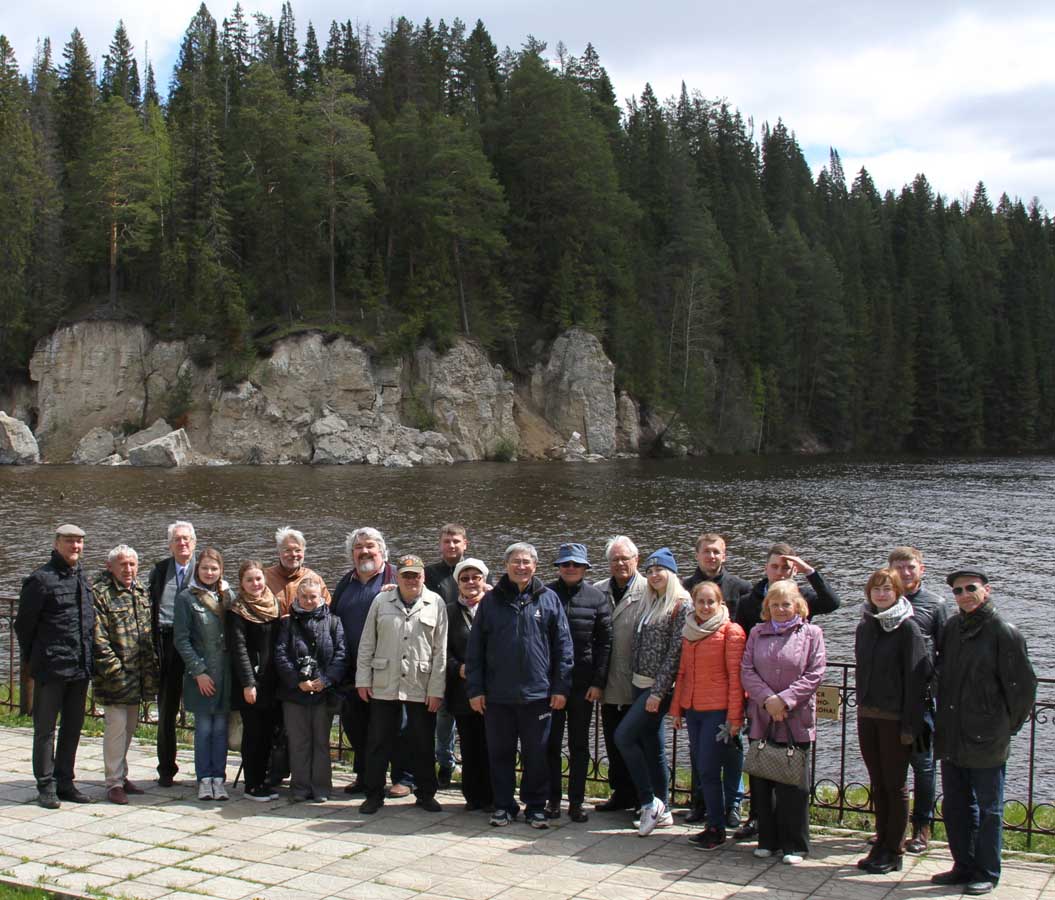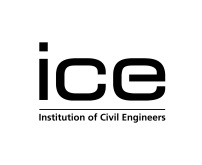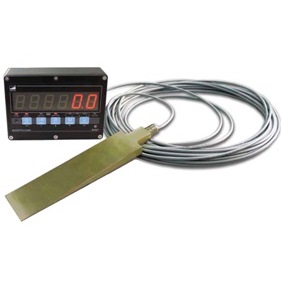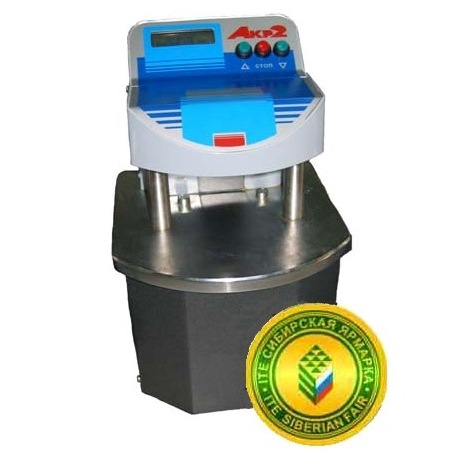The Penetration of Ground Improvement into the Realms of Deep Foundations. Conclusion
ABSTRACT
Ground improvement as a means for allowing the replacement of piled foundations with shallow footings is systematically being used by engineers for many decades. Some ground improvement techniques that are installed by piling rigs and include cementituous columnar rigid inclusions makes it difficult to distinguish where ground improvement ends and deep piled foundations commence. This paper assists the geotechnical engineer by reviewing the concepts of rigid inclusions, how they differ with piles, and presenting of case studies of very deep applications of rigid inclusions.
 |
 |
 |
The best ground conditions for a project can be envisaged to be when the ground is competent and loads can be applied to shallow footings. In this scenario construction time and costs are both minimal. Terzaghi et al. (1996) define a shallow footing as a footing that has a width equal to or greater than the foundation depth, which is the distance from the level of the ground surface to the base of the footing, and a pile as a very slender pier that transfers a load through its lower end onto a firm stratum or else through side friction onto the surrounding soil. Bowles (1996) defines shallow foundations as bases, footings, spread footings or mats with the ratio of depth of footing to its width being equal to or less than 1, and deep foundations as piles, drilled piers or caisson with ratio of length to width (or diameter) being equal to or greater than 4.
On the other hand, Das (2009) states that studies show that the ratio of footing depth to width of shallow footings can be as large as 3 or 4.
While it could be advantageous to have concise definitions for various concepts and behaviours to avoid confusion and to allow clear communication, it is not possible to simply set an integer as the boundary between two foundation systems. The concept of shallow versus deep foundation is only a simplification for explaining the mechanisms of load transfer to the ground. Bearing of shallow foundations are generally expressed by shear theories originally developed by Prandtl (1920), Terzaghi (1943), Meyerhof (1951) and Hansen (1971). Skin resistance (Tomlinson, 1971; Vijayvergiya and Focht, 1972; Burland, 1973) may become a major contributor as the ratio of footing height to width begins to increase. At the same time, while a large based footing may be categorised as a shallow foundation system due to its depth to width ratio, the depth of soil within the system may be very deep indeed.
To further complicate this simplification, it is possible to convert deep loose or soft soils to adequately competent ground by soil improvement, and to safely dissipate the loads without engaging piles for transferring loads to firm ground. Chu et al. (2009) have classified and described the various ground improvement techniques that are commonly practiced. Some of these techniques are developed to improve the physical and mechanical properties of in-situ soils without the introduction of imported material, and the outcome will remain as what is classically referred to as a shallow foundation. On the other hand, in other ground improvement techniques higher quality materials are added to the ground as inclusions. Some inclusions may be very long, and can form deep foundations that are composed of classical shallow footings and deep soil masses that are improved by the inclusions. These types of foundations cannot be expressed by the classical shallow foundation approaches and require further understanding, analysis and design of the improved ground as part of the foundation system.
The complication in the categorisation can turn into confusion when piling rigs are used to install cementitious columnar inclusions. One very efficient, beneficial and affordable type of such rigid inclusions is the controlled modulus column (CMC).
3. CONCLUSION
Deep rigid inclusions have complicated the classical definitions of shallow and deep foundation systems. CMCs are a type of cementitious rigid inclusion that resemble piles, but their design concept is very different. They have many advantages, including independence of column strength from in-situ soil parameters, non-reliance of column lateral stability on in-situ soil parameters, significant reduction of the magnitude of settlements, vibration-less installation process, negligible amounts of spoil, and high production rates.
This technology utilises a load transfer platform to distribute the loads between the columns and the in-situ ground. Column loads can be determined by numerous methods. IREX proposes the analyses of ground behaviour and load distribution for grounds improved with columnar inclusions in a variety of cases.
Numerical methods are commonly used for the analysis of CMCs, but a deep insight is required for modelling and assigning input parameters in these methods. Research suggests that classical input parameters may over estimate settlements, and more accurate results may be possible if input parameters are calibrated. Racinais (2015) has proposed a calibration method that is based on the pressuremeter test and matching the curves of Frank and Zhao (1982).
CMCs have been successfully used for improvement of ground to depths of 42 m for highly strategic structures such as oil tanks.
See the main text of the article next to it.
REFERENCES
Aboshi, H., Ichimoto, E. & Harada, K. (1979) The Compozer: A Method to Improve Characteristics of Soft Clays by Inclusion of Large Diameter Sand Columns. International Conference on Soil Reinforcement; Reinforced Earth and Other Techniques, 2, Paris, 20-22 March, 211–216.
American Concrete Institute (2005) Building Code Requirements for Structural Concrete (ACI 318-05) and Commentary (318R-05). Farmington Hills, MI, American Concrete Institute, 430.
American Petroleum Institute (2001) API Standard 653: Tank Inspection, Repair, Alteration, and Reconstruction, 3rd Edition, 112.
Bowles, J. E. (1996) Foundation Analysis and Design, 5th Ed., New York, McGraw Hill, 1175.
Barksdale, R. D., and Bachus, R. C. (1983). "Design and Construction of Stone Columns, Volume 1, FHWA/RD-83/026." 194.
Buschmeier, B., Masse, F., Swift, S. & Walker, M. (2012) Full Scale Instrumented Load Test for Support of Oil Tanks on Deep Soft Clay Deposits in Louisiana Using Controlled Modulus Columns. International Symposium on Ground Improvement (IS-GI) Brussels 2012, 3, Brussels, 31 May - 1 June, 359-372.
Burland, J. B. (1973) Shaft Friction Piles in Clay - a Simple Fundamental Approach. Ground Engineering, 6, 3, 30-42.
Chu, J., Varaksin, S., Klotz, U. & Mengé, P. (2009) State of the Art Report: Construction Processes. 17th International Conference on Soil Mechanics & Geotechnical Engineering: TC17 meeting ground improvement, Alexandria, Egypt, 7 October 2009, 130.
Combarieu, O. (1988) Amélioration des sols par inclusions rigides verticales. Application à l'édification de remblais sur sols médiocres. Revue Française de Géotechnique, 44, 57-79.
Das, B. M. (2009) Shallow Foundations Bearing Capacity and Settlement, 2nd Ed, Boca Raton, FL, USA, Taylor & Francis Group.
European Standard (2004) EN 1997-1: 2004, Eurocode 7: Geotechnical Design - Part 1: General Rules 171.
European Standard (2004a) BS EN 1992-1-1, Eurocode 2: Design of Concrete Structures – Part 1-1: General – Common Rules for Building and Civil Engineering Structures.
Frank, R. & Zhao, S. R. (1982) Estimation par les Parametres Pressiometriques de 1'enfoncementt Sous Charge Axiale de Pieux Fores dans des Sols Fins. Bulletin Laison Laboratoire Central des Ponts et Chaussees, 119, 17-24.
Hamidi, B., Masse, F., Racinais, J. & Varaksin, S. (in print) The Boundary between Deep Foundations and Ground Improvement. Geotechnical Engineering,169, GE2, 201-213.
Hamidi, B., Nikraz, H., and Varaksin, S. (2009). "Arching in Ground Improvement." Australian Geomechanics Journal, 44(4 (December)), 99-108.
Hansen, J. B. (1970) A Revised and Extended Formula for Bearing Capacity. Danish Geotechnical Institute Bulletin, 28 (successor to Bulletin No 11), 21.
IREX (2012) Recommandations pour la conception, le dimensionnement, l’exécution et le contrôle de l’amélioration des sols de fondation par inclusions rigides, ASIRI 384, Presses des Ponts.
Masse, F., Pearlman, S. L. & Taube, M. G. (2009) Controlled Modulus Columns for Support of above Ground Storage Tanks. 40th Ohio River Valley Soil Seminar (ORVSS), Lexington, Kentucky, November 13.
Meyerhof, G. G. (1951) The Ultimate Bearing Capacity of Foundations. Geotechnique, 2, 4, 301-333.
Murayama, S. (1962) Vibro-Compozer Method for Clayey Ground (in Japanese). Mechanization of Construction Work, 150, 10-15.
Navin, M. P. (2005). "Stability of Embankments Founded on Soft Soil Improved with Deep Mixing Method Columns." PhD, Virginia Polytechnic Institute and State University.
Okyay, U. S. (2010) Etude expérimentale et numérique des transferts de charge dans un massif renforcé par inclusions rigides. Application à des cas de chargements statiques et dynamiques. Civil and Environmental Engineering. Lyon, Institut National des Sciences Appliquées de Lyon, 402.
Prandtl, L. (1920) Uber Die Härte Plastischer Körper Nachrichten Von Der Königlichen Gesellschaft Der Wissenschaften, Gottingen, Math.- Phys. Klasse,74-85.
Racinais, J. (2015) Calibration of Rigid Inclusion Parameters Based on Pressuremeter Test Results. 16th European Conference on Soil Mechanics and Geotechnical Engineering (XVI ESCMGE), Edinburgh, 13-17 September, Presentation.
Schweiger, H. F. (2002) Results from Numerical Benchmark Exercises in Geotechnics. 5th European Conference Numerical Methods in Geotechnical Engineering (NUMGE 2002), Paris, 4-6 September, 305-314.Terzaghi, S. (1943) Theoretical Soil Mechanics, New York, John Wiley & Sons, 510.
Terzaghi, K., Peck, R. B. & Mesri, G. (1996) Soil Mechanics in Engineering Practice, 3rd Edition, New York, John Wiley and Sons, 512.
Tomlinson, M. J. (1971) Some Effects of Pile Driving on Skin Friction. Conference on Behaviour of Piles, London, 107-114.
Vijayvergiya, V. N. & Focht, J. A. (1972) A New Way to Predict Capacity of Piles in Clay. 4th Offshore Technology Conference, Houston, paper 1718.












